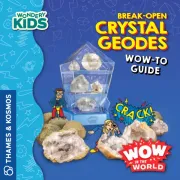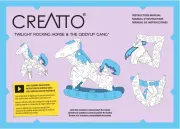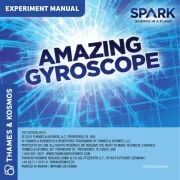Thames & Kosmos Legends of Andor: Base Game (Manual) Handleiding
Thames & Kosmos
Niet gecategoriseerd
Legends of Andor: Base Game (Manual)
Bekijk gratis de handleiding van Thames & Kosmos Legends of Andor: Base Game (Manual) (8 pagina’s), behorend tot de categorie Niet gecategoriseerd. Deze gids werd als nuttig beoordeeld door 7 mensen en kreeg gemiddeld 5.0 sterren uit 4 reviews. Heb je een vraag over Thames & Kosmos Legends of Andor: Base Game (Manual) of wil je andere gebruikers van dit product iets vragen? Stel een vraag
Pagina 1/8

Dwarf from the deep mines
Rank 7
Special ability: Kram can buy strength
points at the dwarf mine (space 71) for
1 gold each instead of 2 gold.
KRAM
Space for
any quantity of
gold and gemstones
Strength points
Willpower points
Well
Merchant
If a hero ends
his move on
a space with
the merchant
symbol, p1-he can
buy 1 strength point for
every 2 gold. en, it is the
turn of the next hero in a
clockwise direction.
Game Materials
1 Double-sided game board
41 Plastic holders for the game gures
(26 red, 4 black, 3 gray, 2 blue, 2 yellow, 2 green, 2 purple)
1 Equipment board (“battle board” on the rear side)
72 Large cards (71 Legend cards and 1 “Checklist” card)
20 Dice (4 blue, 5 green, 3 yellow, 1 purple, 3 red, 4 large black)
9 Wooden disks (2 blue, 2 green, 2 yellow, 2 purple, 1 red)
5 Wooden cubes (1 blue, 1 green, 1 yellow, 1 purple, 1 red)
15 Storage bags
1 Quick-Start Guide
4 Hero boards (each with a hero on one side, and a heroine on
the other)
8 Heroes:
28 Creatures:
7 Other gures:
Male
warrior
Female
warrior
Male
archer
Female
archer
Male
wizard
Female
wizard
Male
dwarf
Female
dwarf
16 Gors 5 Skrals 2 Wardraks5 Trolls
Dark
mage
Prince
orald
Dragon
Shield
dwarves
Witch TowerNarrator
26 Gold tokens
12 x 10 x 4 x
15 Fog tokens:
5 x
Event
card
3 x
1 Gold
1 x
Strength
points +1
2 x
Gor
1 x
Willpower
points +2
1 x
Wineskin
1 x
Willpower
points +3
1 x
Witch’s brew
24 Equipment articles:
Poison token
1 x
4 Well
tokens
4 x
3 Medicinal herb tokens
6 Parchment tokens 6 Rune stones
2 x 2 x 2 x
4 Farmer
tokens
2 x 2 x
8 Rubble tokens 11 Gemstone tokens
5 x 5 x 1 x
1 “N” token
3 Red X’s
3 x
4 x Shield 3 x Bow 2 x Falcon
5 x
Wineskin
2 x
Telescope
5 x
Witch’s
brew
3 x
Helm
7 Large tokens
15 Creature
tokens
8 Stars
8 x
1
Values of 7, 8,
10, 11, 14, 17
66 Small cards:
1 silver start
card
11 silver event
cards
34 golden
event cards
10 “Secret Sea”
event cards
10 fate
cards

What’s the game about — and how do you play it?
e heroes are trying to protect the land of Andor from evil creatures
and complete other exciting quests. e game is played in 5 Legends.
For each Legend, there is a set of large Legend cards.
When you play for the rst time, start with the Quick-Start Guide
for Legend 1. at will set you up quickly and easily in your rst
game. Additional game rules will show up every once in a while
during your adventure.
at’s all you have to know for Legend 1. So put this booklet back in
the box for now, and start with page 1 of the Quick-Start Guide.
Exciting adventures await!
How does the game continue aer Legend 1?
Once you have successfully completed the rst Legend and want to
continue to the second Legend (or other Legends later on), you will
need the Legend cards that go with each Legend.
You will also need the large Checklist card.
e Checklist explains all the preparations you have to complete before
each game.
en, simply read Legend card A1 for the new Legend out loud.
e card will tell you if extra playing materials are needed for this
Legend. And if new rules are introduced, the card will tell you that
too. If questions come up as you play, you will nd the answers in this
Reference Manual booklet under the appropriate heading.
Because all of the rules and special cases written on the various Legend
cards are also written here, you will no longer need the Quick-Start
Guide or the Legend cards from earlier Legends. You can just look
up the explanations or details during the game. Even if you haven’t
played the game for a while, you will nd everything you need on the
Checklist card and in this manual.
You will need the manual for Legend 1.not
Overview of the course of play
(Not needed for Legend 1!)
• e game is played over several days. Each day has 7 normal
hours, with up to 3 additional overtime hours being available.
• e hero whose turn it is selects the “move” or “ght” action.
When moving, each space counts 1 hour, while each battle
round also counts 1 hour. ese hours are deducted on the time
track using the time marker. A hero can use up as many hours
during his turn as he likes. If, for example, he moves 4 spaces,
it costs him 4 hours. If he engages in a ght with a creature that
lasts 3 rounds, it costs him 3 hours.
• Aer the rst hero’s action, it is the turn of the next hero in a
clockwise direction, who will again select one of the two actions
and use up as many hours as he likes.
• Once all the heroes have had a turn and play comes around to
the rst hero again, he once again selects one of the two actions
and uses up as many hours as he needs. e heroes keep taking
turns until they have used up their hours and any possible
overtime hours, or until they wish to end their day ahead of
time.
• A hero can play up to 3 “overtime hours.” Each overtime hour
costs 2 willpower points.
• It is not unusual for a hero to end his day while the others still
have hours le and continue to play. If a hero wants to end his
day when his turn comes up, he places his time marker in the
sunrise box. If he is the rst one to do so this day, he places the
time marker on the space with the rooster to show that he will
be the one to begin the new day.
• Once all the heroes have ended their day, the symbols in the
sunrise box are performed in the indicated sequence (see page
5, “e sunrise box”). e 8th symbol shows the Narrator gure,
indicating that the Narrator advances 1 space on the Legend
track.
• e players have to pay attention to whether the Narrator
triggers a Legend card in the process of his move, which they
would have to read out loud and follow.
• On the new day, all the heroes once again have 7 hours and up
to 3 overtime hours at their disposal.
• In addition to moving at sunrise, the Narrator also Important:
moves whenever a creature is defeated.
• When a creature enters the castle, it is immediately placed on a
golden shield next to the castle. e Legend is prematurely lost
if there are no more unoccupied shields for a creature entering
the castle. e number of golden shields depends on how many
heroes there are. Example: With four heroes, only 1 creature may
be allowed into the castle (see illustration next to the castle).
• e heroes have to complete each Legend goal before the
Narrator has reached the “N” on the Legend track. Otherwise,
all of them as a group will have lost.
2
Introduction

e hero board
At the start of play, each player selects his hero and the playing
materials in his color (dice, wooden disk, wooden cube). Not all
players have the same number of dice. e hero board displays the
special ability of each hero and the various display and storage spaces.
Except for the gold and gemstone areas, each storage space can have
only 1 token placed on it.
e wooden cube indicates how many points the hero can use when
ghting. At start of play, each hero has 1 strength point. One of his
two wooden disks indicates the number of dice he is allowed to ght
with (see the dice number to the le of the ). Heroes willpower points
always start with 7 willpower points each. e warrior, for example, can
ght with 3 dice if he has 7 willpower points. If he loses a willpower point
and drops into the rst row, there are only two dice le for him to use.
At the top right is the of the hero. At 34, the wizard has the rank
highest rank, while the dwarf has the lowest at 7.
e heroes’ actions
e hero whose turn it is can choose between 2 options:
Move or ght
Each of these actions costs time on the time track. Fighting costs 1
hour per round, and moving costs 1 hour per game board space.
Note: In addition to these actions, a hero has various other options
available that he can also perform when it is not his turn and that will
not cost him any time on the time track (see page 4).
e “move” action
A hero can move as many spaces as he likes in his turn, as long as
he has enough hours le on the time track. Each game board space
that the hero enters costs him 1 hour on the time track. So for each
hour used, the hero’s time marker is advanced 1 position. e arrows
between the game board spaces have no signicance for the heroes’
movement.
When a hero completes his movement on a space that has a fog
token lying on it, the token is activated and immediately carried out.
Example of a “move” turn: e wizard moves from space 9 to space 11,
which has a fog token lying on it. Because he moved 2 spaces, his time
marker is advanced 2 hours on the time track. He has to immediately
reveal the fog token and carry it out. en it is the next hero’s turn in a
clockwise direction.
Notes: e castle (space 0) can be entered and passed through like a
normal space from any adjacent space.
e river cannot be entered. It can only be crossed by using a bridge. e
bridges are not spaces, and are not counted as spaces when moving.
Any number of heroes may stop on any given space.
e “ght” action
e course of a battle
A hero who nds himself on a space with a creature may attack the
creature. e archer, or any hero with a bow, may also attack from an
adjacent space. If the hero moves onto that space during this turn, he
has to wait until his next turn to attack. Meanwhile, it will be the turn
of all the other heroes in clockwise order.
e hero’s attack:
1. In each battle round, the hero’s time marker is advanced 1 space on
the time track.
2. e hero always starts by rolling all the dice available to him (as
indicated at the le of the hero board next to his current willpower
points).
3. Next, he adds his current strength points to his highest roll. is
yields his battle value.
4. If the hero wants to use a “witch’s brew” or medicinal herb token, he
must decide to do that immediately aer rolling. He is not allowed
to wait to see the creature’s reaction.
Example showing how to calculate battle value: e warrior has 9
willpower points and therefore rolls 3 dice. Let’s say he rolls 4, 3, and 3.
He takes the highest die value (4) and adds his current strength points
(5) to derive a battle value of 9. If the hero is in possession of a helm, he
would instead add the two 3s to his strength points to get a battle value
of 11 (5 + 3 + 3).
e creature’s reaction:
1. Before the battle, the strength and willpower points of the creature
are marked on the game board’s creature display. e player to the
immediate le of the ghter rolls the dice for the creature using all
the dice available to him (see the le part of the creature display
next to the current willpower points). Gors, skrals, and trolls roll
with red dice; wardraks roll black dice.
2. e highest die value is what counts for the creature as well. For
creatures, though, identical dice always have their values added
together if it yields a higher total.
3. en, the creature’s strength points are added to its highest die
value. is yields its battle value.
e dierence between the two battle values is deducted from the
willpower points of the defeated side. e archer can lose willpower
points even if he attacks from an adjacent space.
In the case of a draw, nothing happens.
If the creature and the hero still have willpower points, the battle
continues with the next battle round — unless the hero has no more
hours le on the time track, or he chooses to discontinue the battle.
e end of the battle
If the creature has no more willpower points, the hero wins the battle
and immediately receives his choice of gold or willpower points as
his reward. e size of the reward is indicated on the creature display
beneath the strength points of the defeated creature. e defeated
creature is placed on space 80, and the Narrator immediately
advances 1 space! If the hero has no more willpower points, he loses
the battle. He loses 1 strength point, assuming he still has more than
1. He also immediately receives 3 willpower points. en it is the next
player’s turn.
If the battle ends without a winner, the creature recovers. When it is
next attacked, it once again has all of its starting values (see creature
display).
Fighting together
•
If there is more than one hero standing on a space with a creature (or
the archer or a hero with a bow on an adjacent space), they can ght
together.
• e hero whose turn it is invites the other heroes to battle. e time
markers of all the heroes participating in the collective battle are
advanced 1 hour.
• e collective battle value is calculated by rst adding up the strength
points of all the participating heroes. en the hero who invited the
others rolls the dice, followed by all the other participating heroes
3
e Heroes
Product specificaties
| Merk: | Thames & Kosmos |
| Categorie: | Niet gecategoriseerd |
| Model: | Legends of Andor: Base Game (Manual) |
Heb je hulp nodig?
Als je hulp nodig hebt met Thames & Kosmos Legends of Andor: Base Game (Manual) stel dan hieronder een vraag en andere gebruikers zullen je antwoorden
Handleiding Niet gecategoriseerd Thames & Kosmos
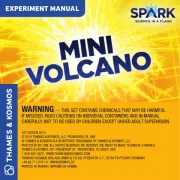
6 Augustus 2025

6 Augustus 2025
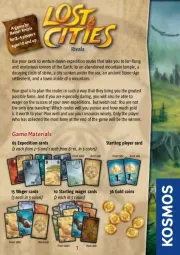
6 Augustus 2025

5 Augustus 2025

5 Augustus 2025
Handleiding Niet gecategoriseerd
- Eico
- Bredeco
- Pit Boss
- Saro
- Monitor Audio
- Marathon
- AeroCool
- Elgato
- AUTOUTLET
- Humminbird
- Ricoh
- OM SYSTEM
- ServIt
- The Joy Factory
- Hähnel
Nieuwste handleidingen voor Niet gecategoriseerd

15 September 2025

15 September 2025

15 September 2025

15 September 2025
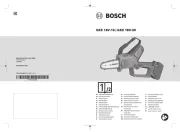
15 September 2025

15 September 2025

15 September 2025
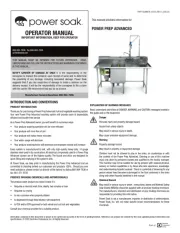
15 September 2025

15 September 2025
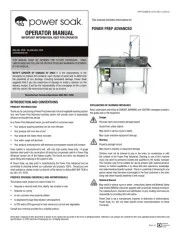
15 September 2025
